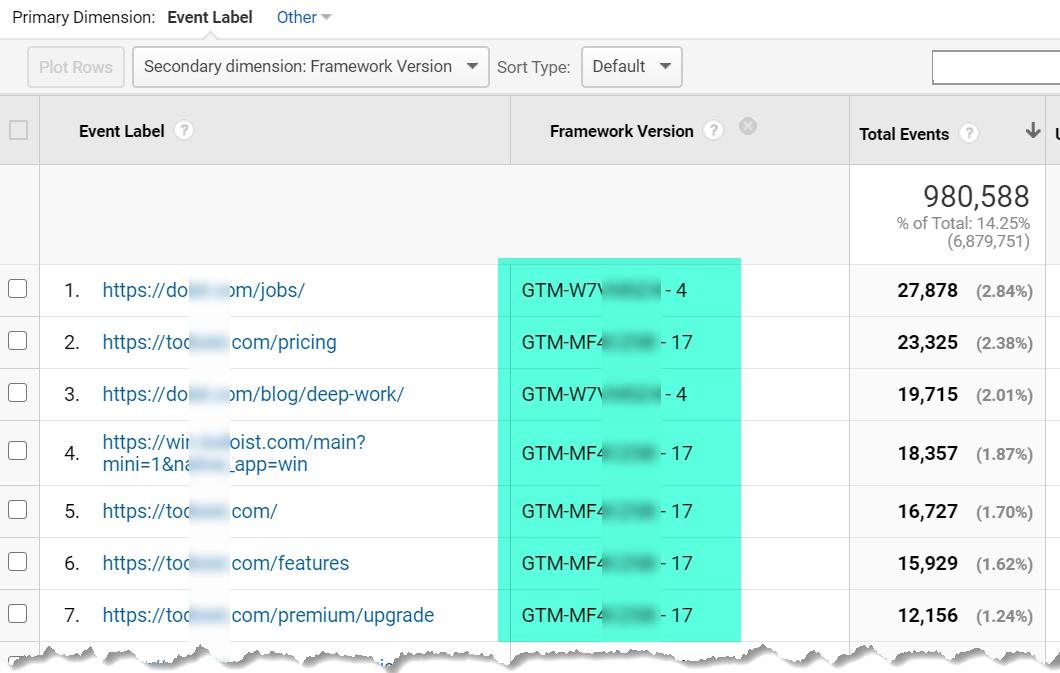Unlock Deeper Insights With Additional Measurement in Google Analytics
With the vast expanse of information offered in Google Analytics, the usage of secondary dimensions can considerably enhance your analytical capacities. These extra layers of information use a nuanced point of view that can brighten elaborate information within your key metrics. By purposefully integrating secondary dimensions right into your analysis, you can discover beneficial insights that could otherwise continue to be undiscovered. The ability to translate and divide individual behavior with better precision opens up a world of possibilities for maximizing techniques and enhancing performance.
Understanding Main Vs. Additional Measurements
When analyzing data in Google Analytics, it is necessary to differentiate in between secondary and main dimensions to acquire much deeper understandings into individual habits. Main dimensions are the primary classifications through which you can watch your information, such as device, landing, or source/medium web page. These dimensions offer the essential structure for arranging and recognizing your information. On the various other hand, secondary dimensions permit you to further explore your primary measurement data. By including a second dimension, you can layer on additional details to your primary measurement, allowing a much more granular analysis. For example, if your key measurement is the source/medium where customers showed up on your site, including a second dimension like geographic area can expose where those users are situated geographically. When looking at the main dimension alone, this included layer of information can aid you determine trends, patterns, or abnormalities that may not have actually been obvious. For that reason, leveraging both secondary and key dimensions in Google Analytics is critical for detailed information evaluation and notified decision-making.
Making Use Of Additional Measurements Successfully
Properly using second measurements in Google Analytics enhances the depth and granularity of data evaluation, offering important understandings into individual behavior and patterns. By incorporating additional measurements along with primary dimensions, online marketers and experts can delve deeper into the specifics of individual communications on their sites. Second measurements enable individuals to sector and filter key measurement information even more, supplying a more thorough sight of customer actions, demographics, and interactions. This can be particularly valuable when attempting to understand the impact of details variables on user engagement, such as the internet browsers or gadgets they are using, the sources of their website traffic, or their geographical places.
In addition, secondary measurements make it possible for customers to contrast and contrast various data points within a solitary record, helping with a much more thorough analysis of individual habits patterns. By leveraging secondary dimensions effectively, companies can reveal hidden understandings, maximize their advertising approaches, and enhance the general user experience on their web sites.
Exploring Typical Second Measurement Mixes
To even more analyze individual habits and fads in Google Analytics, it is useful to discover typical combinations of second measurements. Some common second dimension mixes that offer beneficial insights include evaluating website traffic resources with customer areas to understand where web site visitors are coming from geographically and how they found the site. Examining customer habits metrics with secondary measurements such as rate of interests or visit our website demographics can aid in targeting certain target market sections a lot more properly.
Applying Second Measurement in Custom-made Information
Using second dimensions in personalized records enables a more comprehensive analysis of data in Google Analytics, enhancing the depth of understandings obtained. When developing custom-made records in Google Analytics, including secondary dimensions can supply a more thorough view of exactly how numerous dimensions interact with each other. This see this page feature enables individuals to delve deeper right into their data and discover important relationships that may not be quickly noticeable.
By applying second dimensions in customized reports, users can gain a better understanding of their site or application web traffic. For instance, incorporating the main dimension of "source/medium" with the second dimension of "touchdown web page" can expose which touchdown web pages are executing ideal for web traffic coming from specific resources. This insight can aid online marketers optimize their projects and improve total conversion rates.

Enhancing Data Visualization With Secondary Measurement
When exploring data in Google Analytics custom-made records, incorporating additional dimensions not just offers an extra in-depth evaluation but likewise enhances the graph of understandings through data visualization. By including a second measurement to your records, you can enrich the method information is presented, making it much easier to recognize patterns, trends, and connections within your internet site's performance metrics.
Secondary dimensions can aid you segment your data further, enabling for a much deeper understanding of individual habits and communications on your website. When attempting to isolate specific variables that may impact your site's efficiency., this improved level of granularity can be especially helpful.
Verdict
To conclude, leveraging second measurements in Google Analytics permits for a much more extensive evaluation of data, leading to much deeper insights and even more educated decision-making. Secondary Dimension in Google Analytics. By including added layers of information to primary information collections, analysts and online marketers can reveal concealed trends, patterns, and connections that supply a granular sight of individual habits and interactions. This enhanced degree of understanding enables optimization of campaigns and tailored techniques for certain audience sections, inevitably enhancing performance and conversion prices
On the various other hand, additional dimensions enable you to additional study your primary dimension information. By adding an additional dimension, you can layer on additional information to your main measurement, making it possible for a much more granular evaluation. If your key dimension is the source/medium with which individuals got here on your website, adding an additional measurement like geographical place can reveal where those customers are located geographically. By integrating additional measurements together with key measurements, marketing professionals and analysts can dig much deeper right into the specifics of customer communications on their sites. Additional measurements allow customers to section and filter key dimension data further, providing a more comprehensive sight of individual demographics, communications, and habits.